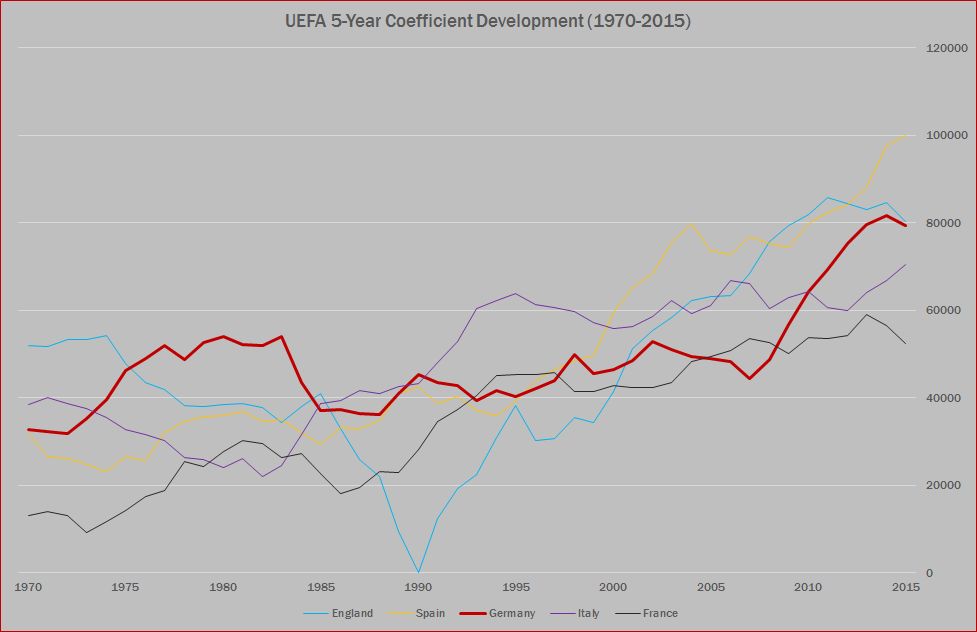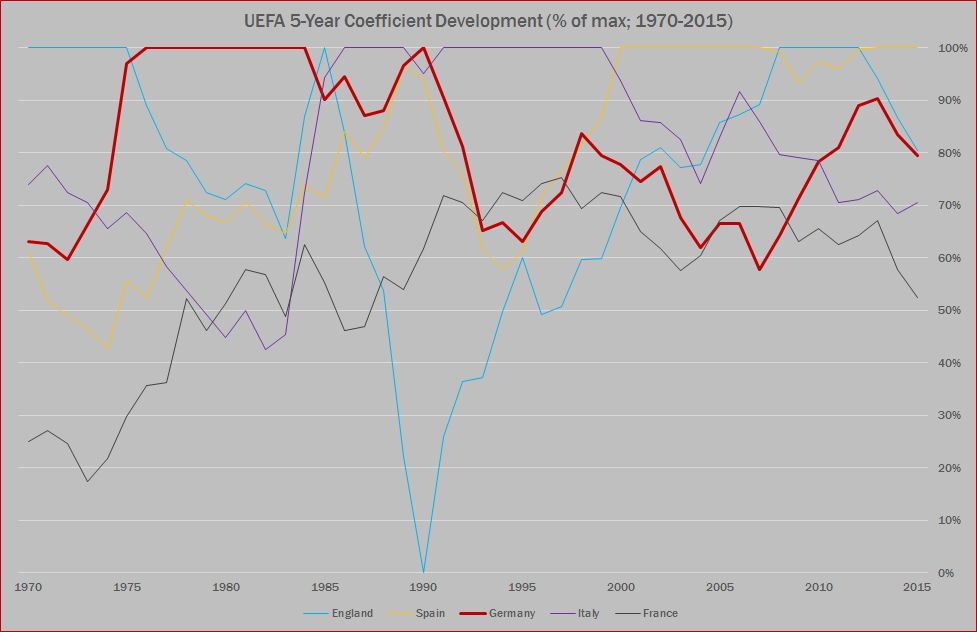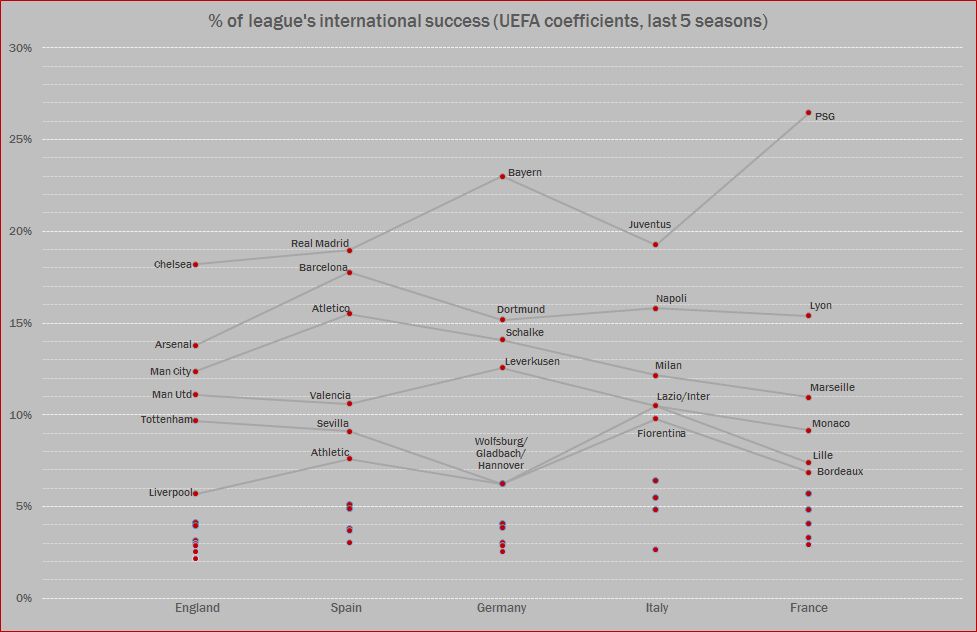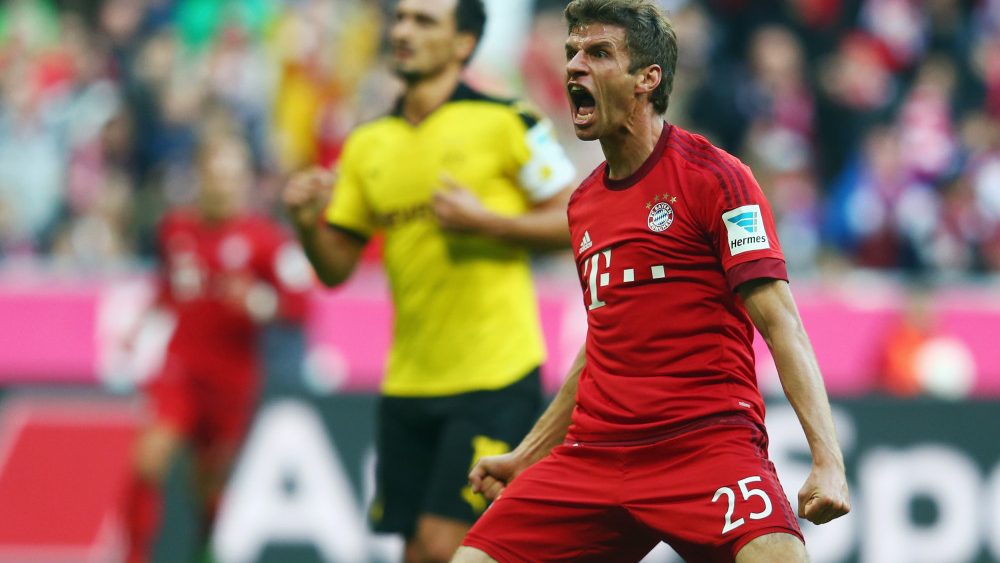State Of The Bundesliga – Part Two
Historical Ups and Downs
It would only be right to complain that football didn’t start in 1998 (or any time during the 1990s, English media). In order to paint a more complete picture, we took the famous UEFA coefficients of the current top 5 leagues and traced them back all the way to the year 1970.

While this is a pretty graphic that also does a good job at illustrating the ban of English clubs from UEFA competitions in the late 1980s, it’s not entirely useful. The reason is simple: just like money, UEFA’s coefficient points are brutal victims of inflation. That La Liga lies around the 100,000 point mark now doesn’t imply a historical dominance (although it kinda is) because everybody’s numbers have risen. More matches, more participants, more points.

So here’s kind of an inflation-adjusted graphic, using % instead of absolute numbers. What do we see?
The height of the Bundesliga took place from the mid-70s to the early 80s. Bayern, Gladbach and Hamburg in particular played some impressive campaigns. It was a brutally dominant time as well, with the gap to the second-best of the analyzed leagues being around 30%, a gap that was only repeated by the Italian dominance of the 1990s. Furthermore, the suspicions that we mentioned earlier are confirmed. The Kirch crisis era was an extreme setback for the league, as it was the worst of the big five only in the mid-2000s. That on the other hand also means that the recent surge of the Bundesliga was not really an improvement, just a return to the usual historical status.
So, to sum up the international success of the German league, we can say that it’s pretty ordinary and average right now. There have been better times, there have been worse times, the current times are business as usual.
But…is it a league effort? We looked at the club coefficients in order to determine whether the current coefficient (a number based on the last five seasons) is a collective effort or a more individual work.

Bayern. Naturally. Almost 25% of the Bundesliga’s current coefficient points were collected by the Bavarians. The only club to go beyond that number are PSG, the artificial giants of France. Behind Bayern, you find the “reliable three” of Dortmund (who would be a clearer number two if not for their inconsistent pre-2013 results in Europe), Schalke and Leverkusen. Everyone else was nothing more than a flavor of the month at best.
In England, you have the top four (with Chelsea’s gap being less surprising than you’d initially think) plus Tottenham as the annual Europa League representative. La Liga, surprisingly, is more than just Barca and Real Madrid, as Atletico carry the burden as well. Serie A features Juve as leaders, with Europa League lovers Napoli right behind. France, as mentioned, is a bit of a joke.
When you look at the absolute numbers, it becomes obvious that the Bundesliga lacks depth, otherwise they could keep up with the best.

Yes, you read that right. Spain’s La Liga, sometimes dubbed an awful two-team league, dominate the league coefficients when you remove the top two of every country. Not even the rich Premier League can keep up with their success, proving that money really isn’t everything in football.
On the third and final page, we check the state within the Bundesliga. Don’t miss our conclusion!




 February 5, 2016
February 5, 2016 





Insightful write up